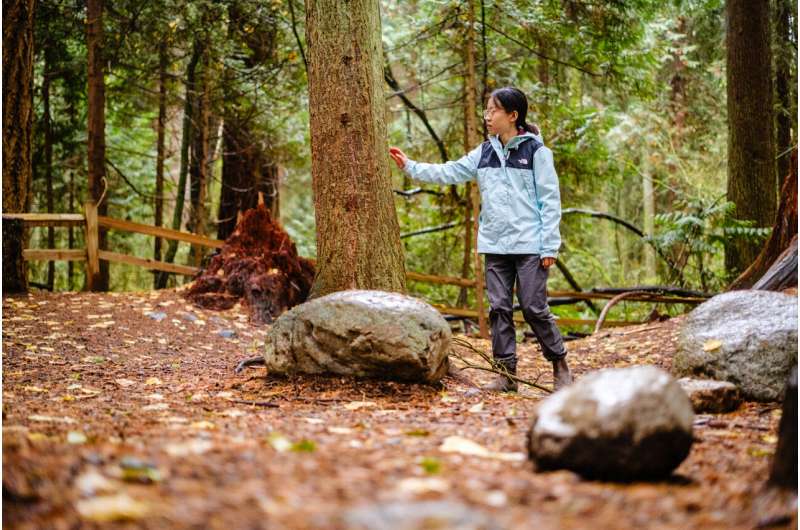This article has been reviewed according to Science X's editorial process and policies. Editors have highlighted the following attributes while ensuring the content's credibility:
fact-checked
trusted source
proofread
Q&A: Bringing forest therapy indoors can improve your health

For centuries, people have found solace in walks through the forest and the practice of "forest bathing." Now, researchers at UBC are delving into the science behind this tradition to understand its benefits better and make them accessible to all.
Leading the experiment is Dr. Guangyu Wang, a professor at UBC's department of forest resources management and director of the Multidisciplinary Institute of Natural Therapy (MINT). In this Q&A, Dr. Wang shares insights into their findings thus far.
How does forest bathing differ from a regular nature walk?
Forest bathing, or shinrin-yoku—a term originating in Japan in 1982- emphasizes immersive experiences in forests, engaging all senses intentionally. It's structured as a program with specific health goals, tailored to individual needs, and involves a deliberate and mindful connection with nature to unlock its therapeutic benefits.
In a guided 15- or 30-minute practice, participants are led through exercises to experience the forest mindfully, encouraging awareness of the environment—to hear birdsong, touch soil and trees, take deep breaths, and emotionally connect to nature. Such a structured walk can provide a more holistic, deeper experience with anticipated outcomes than more casual forays.
What are the specific health benefits of forest bathing?
Research indicates that forest bathing or forest therapy can alleviate stress, uplift mood and boost cognitive and immune functions. It may also reduce blood pressure and heart rate and improve sleep quality.
At MINT, we explore this phenomenon. Our previous experiments revealed that exposure to negative ions and natural forest sounds significantly reduces stress and improves sleep quality, while even a two-hour forest therapy session can lower blood pressure and stress levels.
Currently, we are replicating forest environments indoors, including sounds, scents and lighting. We use a negative oxygen ion generator, plants, virtual reality, and aromatherapy to recreate these elements, tailored to diverse needs—from stressed youth to retired seniors—while monitoring stress levels and physiological markers. Although the experiment is still ongoing, participants frequently report feelings of relaxation and enjoyment.
Are there ideal environments for forest therapy?
Optimal environments for forest therapy encompass diverse ecosystems, including old-growth forests, water bodies and forests abundant in coniferous species like pines and yews, which produce immune-boosting phytoncides. Forests with natural sounds, ample sunlight, high biodiversity, and well-maintained trails provide an enhanced experience. However, the benefits of forest therapy can extend across various landscapes, and activities can be adapted to maximize the health advantages.
How can people incorporate the benefits of forest bathing into their daily lives?
Creating nature-inspired living spaces, adopting natural decor, using aromatherapy, practicing mindful breathing, and taking regular nature breaks can all be effective. Our group plans to develop a guide for optimal living spaces, and we're also gearing up to offer training for forest therapy guides.
As more researchers join MINT and industry professionals and organizations seek collaboration, we aim to integrate forest therapy into public health systems. MINT currently collaborates with the BC Cancer Research Centre, UBC Hospital, the Association of Nature and Forest Therapy, and other organizations.
We recently partnered with the City of Powell River and a local business developer to establish a wellness center combining forest therapy with other therapies to enhance community well-being and the local economy.
Provided by University of British Columbia




















